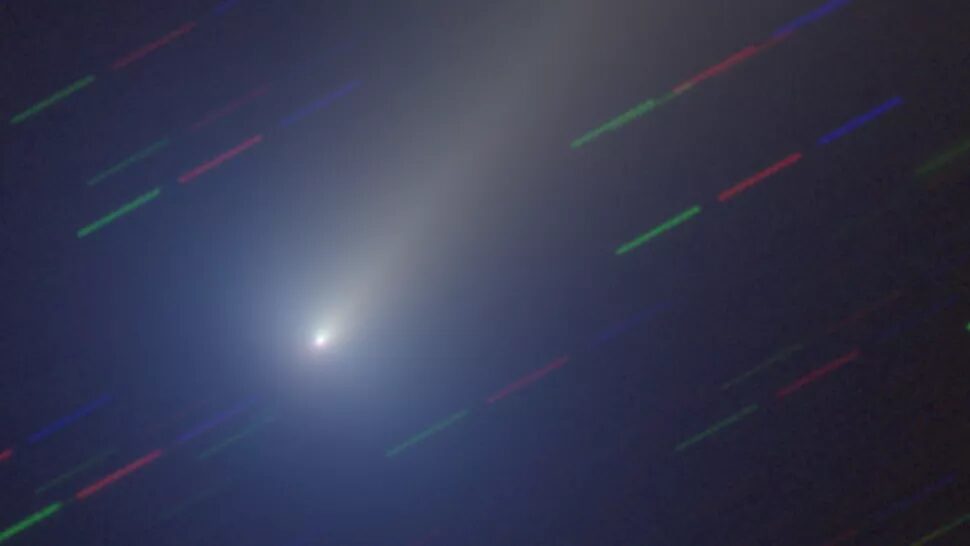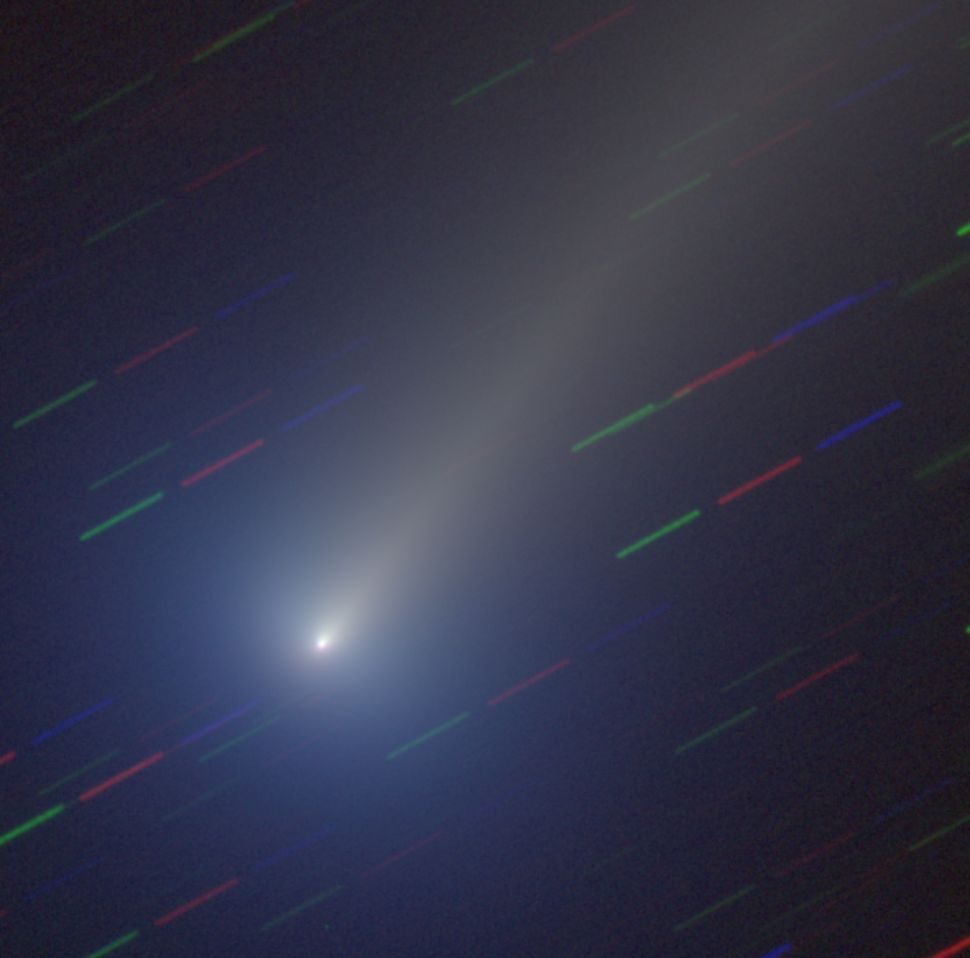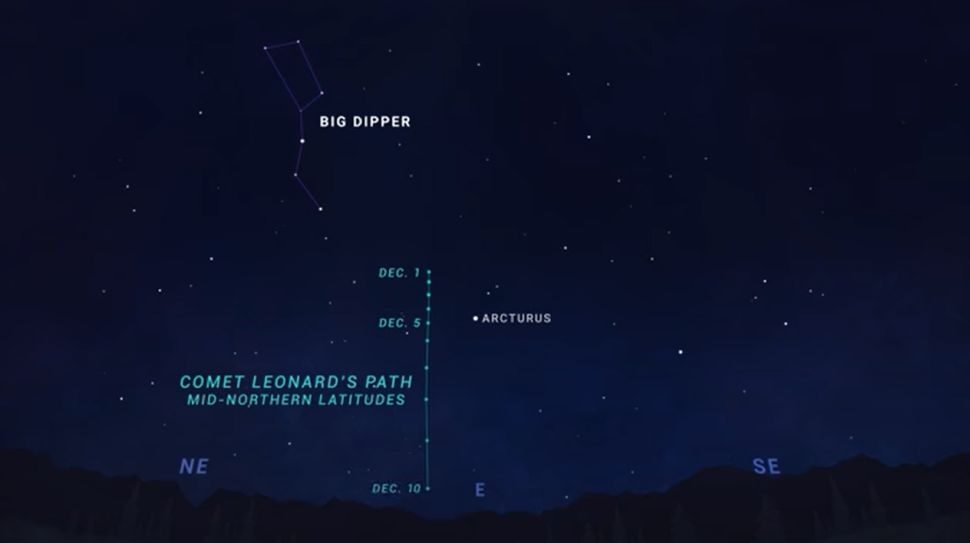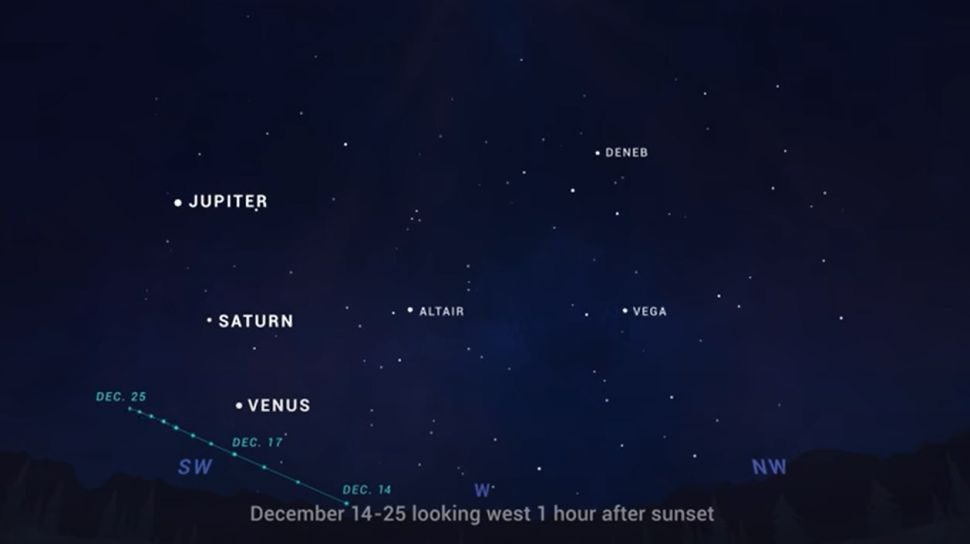
Astronomers first spotted what's been dubbed Comet Leonard in January 2021, and soon skywatchers were eagerly anticipating December and January, when the comet was due to pass by first Earth, then the sun. But by late November, observers noticed something strange. The comet should be getting brighter as it approaches the sun — and it is, but apparently only because it's getting closer to Earth, not because it's becoming inherently brighter.
Instead, it seems to be fading.
"It's not great news. The comet should be brighter and brighter," Quanzhi Ye, an astronomer at the University of Maryland who specializes in comets, told Space.com. "If it's not getting brighter then something's wrong, but we don't know exactly what at this stage."
Comment: It's not that something is wrong 'out there', per se, but that mainstream science's theory of what causes a comet to brighten is wrong. The theory goes that heat from the sun on an 'icy' body creates the coma, tail, and so on, whereas it's becoming increasingly clear that this effect is actually due to electrical activity. The recent discovery of megacomet Bernardinelli-Bernstein, considered the find of a decade, further demonstrates this point:
Additional observations have cast that into doubt, but given the "megacomet" a new distinction: it sprouted a tail remarkably far from the sunIn Pierre Lescaudron's book Earth Changes and the Human Cosmic Connection, he explains what makes an asteroid, a comet:
The fundamental difference between asteroids and comets is not their chemical composition, i.e. dirty, fluffy icy comets vs. rocky asteroids. Rather, as has long been put forward by plasma theorists, what differentiates 'comets' from 'asteroids' is their electric activity.2) An intense circulation of ions and electrons occurs between the asteroid and the surrounding space. The energy provided by this intense transfer 'excites' electrons which generate photons, hence the glow of the asteroid. See: Meichsner, J. Nonthermal Plasma Chemistry and Physics, p.117
When the electric potential difference between an asteroid and the surrounding plasma is not too high, the asteroid exhibits a dark discharge mode1 or no discharge at all. But when the potential difference is high enough, the asteroid switches to a glowing discharge mode.2 At this point the asteroid is a comet. From this perspective, a comet is simply a glowing asteroid and an asteroid is a non-glowing comet. Thus the very same body can, successively, be a comet, then an asteroid, then a comet, etc., depending on variation in the ambient electric field it is subjected to.3
Based on what they've seen from previous comets, scientists worry that Comet Leonard's strange dimming means the iceball may be doomed. In the past, some comets that have broken apart have faded even as they fly closer to the sun — it's been the first sign that something is happening.
"Why it's fading, there are all kinds of hypotheses," Ye said. "The simplest and the most obvious one is something unhealthy is happening to the comet."
The most likely hypothesis, he said, is that Comet Leonard is already splitting up, or it will begin to do so soon. But other factors could be to blame. For example, the comet could simply be running out of ice for the sun to vaporize, although Ye thinks that's unlikely. "It seems to be too coincidental," he said.
Nevertheless, it's too early to call Comet Leonard a goner.
"The images I've seen from this morning [Dec. 7], the comet still seems to be OK — morphologically it looks fine. But the intrinsically fading trend is still continuing," Ye said. "Time will tell, we don't know at this point."

Comet Leonard makes its closest approach to Earth on Sunday (Dec. 12); its perihelion, or closest approach to the sun, comes on Jan. 3. Although the sun's influence will ease up after Jan. 3, the comet isn't necessarily safe even if it survives that long.
"Comets do all sorts of weird things," Ye said.
Comment: Note that, were the working theory correct, the behaviour wouldn't seem all that 'weird'.
"Sometimes they disintegrate before reaching perihelion, sometimes after, and there are even hypotheses saying that comets can disintegrate when they're farther out from the sun. So we won't know until we see it happen."
There are several factors that could break apart a comet, Ye noted. The gravitational tug of the sun or a large planet could pull it apart, sure, but the comet's heart could also implode. If the comet's material vaporizes in quite the right way, it could speed up the comet's spin so dramatically that the iceball flies to pieces.
And if Comet Leonard does break apart, scientists may never know what was the culprit. "Usually for individual comets it's hard to determine which is the dominant driver," Ye said.
Should skywatchers panic?

"Usually it will take a few days before you can see the comet dramatically change and fade and stuff," he said. "We should be still in for something pretty bright next week, simply because it takes time for the comet to fully disintegrate."

Ye said he hasn't been able to see Comet Leonard yet because of cloudy weather, but hopes to next week. While he's interested in what comets can tell scientists about the early days of the solar system, he appreciates the display just as much.
"They're fun to watch and for bright comets they're beautiful," he said. "It's great to see them in the night sky."



Qs and Vs for a while but then they blow off. Meanwhile, more preciptation and storms!